|
23rd June 2022 It's a Thursday evening and we're in Aldershot for some gaming goodness! Welcome to the jungle, we got fun and games We got everything you want, honey, we know the names We are the people that can find whatever you may need If you got the money, honey, we got your disease OK, Welcome To... isn't a game about Guns N' Roses or in fact jungles. It's full name is 'Welcome to... your perfect home' and it's about suburban planning - and that's just as equally as glamorous! What's in a game?
The player sheets come in a pad of 100 pages and thus are used up over games, although they will probably last a long time. Now, this is only a personal gripe of mine but I'd rather have a handful of dry erase sheets instead. There's something unsettling about having your game slowly but inevitably eroded. Would dry erase sheets cost so much more? The cards are the average quality you'd expect from a modern game. Finally, I will add that the game does not come with any pencils or pens which feels a bit like an omission to me The game has a subtle 50's Americana aesthetic to it's art direction, since there isn't a great variety of art used throughout the game, it's not immediately apparent (Other than on the cover!). Artwork on the construction cards are essentially a variation on a theme. Having said that, the art that is used is attractive enough and looks good to me. The game uses iconography for its 6 effects and also to convey information on the city plan cards. None of it is hard to learn and won't pose an obstacle. How's it play? Setup
On to play In Welcome To... players are attempting to create the best neighbourhood with their urban planning skills by creating houses and housing estates. Welcome To.. does not use a traditional turn order, since players do not influence each other, all players' actions are resolved simultaneously. In each turn, the following actions are performed.
Endgame There 3 criteria by which the game can end.
There are a large number of scoring methods in Welcome To... and may come from: generally, the first un-crossed off value is the score for that particular tracker.
Points are tallied, highest score wins. Overall
Welcome To... is a fairly easy to learn game that has a brisk playtime that does not outstay it's welcome (SIC), having said that though, it can end very quickly if the wrong numbers come up at the wrong time! The game provides players some meaningful, interesting decisions to make, this is because there are '2' axis of decision making at work here - house numbers and effects. If the game only utilised house numbers, then it would be too straightforward but by pairing them with effects, it provides intriguing propositions. Players will frequently find themselves in situations where they will want to use a certain effect but don't want the associated house number or possibly, having to think about choosing an effect that won't benefit them in order to a house number they want. Players will need to adapt and make use of what they're given to work with, find ways to exploit the effects they've had to use and make them work. In the case of house numbers, quite often this will mean taking house numbers that are not immediately useful and putting them into one of the streets. This can present various problems for players. Leaving too small a numerical gap between houses can be risky because only specific numbers can go there. E.g., having a 7, then a gap, then a 9 means only a 8 will fit in the gap later on. Conversely, leaving too big a gap will mean wasting numbers. Having a 7, then a gap and then a 12 means that most of the numbers in the 8-11 range will be locked out and cannot be used elsewhere in that street anymore. This is the classic dilemma players face in a lot of roll and write style games: Having to try and plan ahead, hoping what you need will come up at some point later on the game. It's essentially a bit of gamble. In this regard, it's something Welcome Too.. does very well and is a solid entry in the roll and write (Or flip and write if you really want to be pedantic.) genre. It means that if this style of game is not your thing, you probably won't like Welcome To.. but if roll and write games are you thing, Welcome To... is definitely worth a try.
0 Comments
15th April 2022 It's a Friday and we're logged into Board Game Arena for some afternoon gaming. Take a road trip across America, visit the landmarks, go wildlife spotting, play some sports, end where you started? Send a postcard (Or write a letter from America.), walk 500 miles, maybe walk 500 more... OK, enough of the tenuous references. Boomerang: USA combines set collecting and roll and write mechanics into a point salad of a scoring game. Caveat: We've only ever played Boomerang: USA digitally. What's in a game?
The only artwork in the game appears on the 28 cards and is obviously referencing the locations the cards represent. It's pretty artwork too, with blue skies and bright colours. Using letters/symbols for cities is a smart move and easily understood. Boomerang: USA makes use of 4 types of sets to collect and each set will feature its own range of icons, it means that the game has a fairly large array of icons. Luckily, it's clear which icons belong to which set and players don't need to reference a rulebook to know what they mean since the game is about matching icons in their respective sets. How's it play? Boomerang: USA is played over 4 rounds and uses a drafting mechanic where players pick a card from their hand and then passes the remaining cards to their left, then all chosen cards are revealed (Or not for the first card.) simultaneously. This continues until all cards have been selected and players have acquired 7 cards.
Endgame Once the 4th round is completed and scored, players then total their final score from across all 4 rounds. Points are tallied, highest score wins. Overall
On a basic level, Boomerang: USA is a straightforward drafting game. It's point salad of scoring mechanics makes the game complex, most of the blog above talks about the 7 ways to score VPs. Some of the scoring methods have pretty standard elements, collecting matching pairs or 1 kind of set are common, however, restrictions on how these are scored, particularly for Americana activities add an unusual twist. The throw and catch mechanic is the standout here, presenting players with a clear risk and reward choice right at the start of a round especially when this is when they'll have all 7 cards to choose from. Play a 1 as the throw card and it's guaranteed to score but is only worth 1 VP. Playing a 7 as the throw card earns 7 VPS but requires a 7 as the catch card; since player have no control over what their last card will be it's a risky proposition. Typical for a game of this type, it's more or less impossible to score well in all categories at the same and the dilemma of what a player should prioritise is what drives the gameplay. Should a player concentrate on getting locations and regions (Which are another type of set really.) over other sets? Is it a good idea to have a steadily increasing Americana score over round, or go high then score 0 to score high again? When is a good time to try and get a good score in a particular activity? A lot of this will be contextual or unpredictable, it's the nature of this kind of drafting game. Players will probably start a round with no clear direction and will need to adapt to a strategy and recognise what to prioritise as it emerges from whatever cards they pick. There's also a higher level of play where players can watch their opponents to try and gauge what they're concentrating on and deny it to them: If it looks like an opponent is trying to complete coast-to-coast, a player might chose and play a card with the location needed themselves in order to deny that other player. Although I'm not sure that denial tactics are that effective though, it's entirely possible blocking a opponent will involve blocking yourself as well. I felt like the travelling, roll and write element was a bit out of place here, adding extra layers of what seem like unnecessary complexity the game. So while the game has depth thanks to all these scoring opportunities, it actually felt like it was perhaps a little detrimental to the experience, increasing thinking time and inducing some analysis-paralysis as a consequence. Otherwise I can't really find fault with Boomerang: USA, it's not a bad game by any stretch, it just somehow didn't appeal and seemed a little unengaging. Maybe the theme of being a tourist did quite gel with me? I feel that there are other mechanically similar games that are a little more accessible and quicker to play. Obviously, YMMV, a fan of card drafting games who plays them often might find the roll and write part of Boomerang: USA a fresh take in the category. 24th January 2022 It's time for some impromptu Monday gaming in lieu of Sunday and we're logged into Board Game Arena. Can't Stop Express is the roll & write cousin to the excellent push-your-luck dice game; Cant' Stop. Caveat: We have only ever played this game digitally. What's in a game?
And that's it!, Can't Stop Express is a very minimal game and that applies to all of it. I can't comment on the quality of the components, there's no art to speak of in the game and no iconography either. How's it play? Give each player a scorecard and you're ready to go. Can't Stop Express has in one regard a similar mechanic to Can't Stop, which is that after every dice roll, players are putting together 2 sets of 2 dice, the 5th die has a different role (Sic). Where Can't Stop Express differs is that once the dice are rolled, the results are used by all players simultaneously.
Endgame When a player fills the 8th and final checkbox in any one of their 5th die rows, then they stop scoring and the game is over for them. Once all players can no longer score dice, the game is over and players calculate their scores for all scoring rows, rows that have no boxes checked off score 0. Points are tallied, highest score wins. Overall
One thing I found interesting about Can't Stop Express is how it twists the paradigm of Can't Stop. In Can't Stop, the objective is to reach the top of any 3 tracks using the results of the dice rolls, which tracks are used is unimportant; they all score a point each. Since it's much easier to get a 7 than a 2, this is balanced out by needing to get many more 7s to reach the top than you would for 2s. The points have equal value but getting them requires varying numbers of dice results depending on the number. In Can't Stop Express players are also trying to move along tracks but it is changed around. To reach a scoring position for both 2 and 7 requires getting the same number of pertinent results, either six 2s or 7s, but in Can't Stop Express, they score differently. Six 7s will score 30 but six 2s will score 100 and in fact seven 2's would more than all ten 7 results. The dice results required for each track to score are equal but they score varying amounts depending on the number. Anyway, talk about mechanics aside, I found Can't Stop Express to be a bit of a middling game. I like how it shares a concept with Can't Stop of setting aside 2 sets of 2 dice and it probably plays a little quicker. There's no going bust, so no 'wasted' rolls - at least in theory. Luck can mess with players in Can't Stop Express, just in a different way! The push-your-luck element works very differently here, there are no extra dice rolls to make here. Instead players will need to judge which rows to try and fill out and it's in the planning where players push their luck, when a player decides to start marking off the checkboxes in a specific row, they're essentially gambling on that number reappearing again and again. The 7 row is the safest bet but is not much of a scorer. The further away from 7 you move, the greater the rewards but also riskier it is to fill out 6 or more checkboxes. In terms of what I don't like Can't Stop Express is a game completely lacking in theme and feels a little dry (Although to be honest Can't Stop's mountain climbing theme is paper thin.). My biggest bugbear though is the scoring; those first 4 checkboxes that penalise players 200 VPs, occasionally being forced to mark off checkboxes in rows you don't want to and watching your score drop by hundred of points can be very frustrating. I know why it's there, it replaces drawback of going bust from Can't Stop, even so, it makes the game feel negative and I'm not fond of it. I don't think Can't Stop Express is a bad game, mechanically speaking it's pretty solid but it lacks the extra bit of thrill that comes with deciding to re-roll the dice from Can't Stop and doesn't really bring anything new or different to the table. I'd have no issue with playing Can't Stop Express more times but if given the choice between this and Can't Stop, I'd pick the latter every time. 15th January 2022 The Wogglecon day of gaming continued with Rolling Realms. They see me rollin' They hatin' Patrollin' and tryna catch me ridin' dirty OK, Rolling Realms isn't about rapping but it is about rolling and is a quirky little roll-and-write mini-game collection. What's in a game?
All the cards in the game feel reasonably sturdy especially since they're laminated. The dice are definitely a nice touch and have been manufactured with rounded corners, they're about as good as non-wooden dice can get. Rolling Realms features almost no art except some stylistically simplistic illustrations on a few cards, which is fine as otherwise it would probably interfere with whole roll & write thing. The game's core iconography which appears across all cards is easily comprehensible, however, each individual mini-game is likely to contain its own unique icons which must all be learned. How's it play? Setup
On to play Rolling Realms is played over 3 rounds and each round consists of 9 turns, which means 9 sets of dice are rolled each round, there is no turn order in the normal sense and players resolve their choices simultaneously.
Endgame Once 3 rounds have been completed, that is 9 realm cards have been used, then the game is over. Players should calculate their results from all 3 round. Points are tallied, highest score wins. Overall
Rolling Realms is undeniably unique and inventive, a game about mini-games based on games that the publisher has already released. It's impressive how the mini-games generally manage to distil a game's mechanic and/or them down to a simple, related iteration and one that makes use of numbers 1 to 6! The game comes with 11 realm cards and the publisher has released a bunch of expansions and promo cards go along with it. Rolling Realms balances its priorities quite well and mostly makes player decisions meaningful. Players will naturally want to focus on using dice to gain VPs but neglecting resources will give them lass flexibility later on Because the game uses a randomiser, it's hard to plan ahead, that 6 you really need to earn you those last couple of points on a card might never appear.... That means that players need a dollop of adaptability to manage unwanted numbers and that's when resources come in useful. Particularly useful are the abilities to generate a 3rd die result, it can essentially increase your gains by 50%. It's hard to summarise Rolling Realms because there is a lot of little things going on, but I did enjoy it, the variation provides an interesting challenge and every round brought a new set of challenges. A game that uses a lot of mini-games risks being a mixed bag and couple were a bit more obtuse than the others but there were no outright stinkers. Having said that, it felt like a bit of a chore having to go explain 3 sets of rules to unfamiliar players each round, especially since it seems there will always be this one player who just doesn't get something. I also felt the game sat in weird middle-ground of being a bit too long for a filler but a bit too short for a main game for the night. The box says 30 mins, but that's highly ambitious in my opens. These are minor quibbles though. The mini-games are reasonable light but provides enough depth and definitely variation to keep most players engaged. It's one I'd play again 4th July 2021 It's a Sunday evening and I'm logged into Board Game Arena. the next game of the night is Railroad Ink. Do you spend a lot of time coming and going? Because that's what you'll be doing in Railroad Ink. Caveat: we've only ever played Railroad Ink digitally online. Additionally, we've only played the basic version of Railroad Ink Blue without the rives and lakes dice. What's in a game?
Since we only played railroad Ink digitally, there's not much that can be said about the quality of the components. Neither does the game have any significant artwork to speak of, the boards look bright and cheery, but that's about it. How's it play? Setup
Railroad Ink is played simultaneously by all players over 7 rounds.
Endgame Once all 7 rounds have been completed, the game goes to scoring. Railway: Each player scores their single longest unbroken railway line, gaining 1 point per connected square. Road: Each player scores their single longest unbroken road, also at 1 point per connected square. Centre: Each of the 9 central squares on the grid scores the player an additional point for a railway or road that runs through it. Exits: Each player scores their single biggest network of connected exits, it scores differently to railways and roads and there's a chart to calculate this. Generally each exit in the network scores 4 points, except if you manage to connect the 12th and final exit, which scores 5 instead! Dead end: Each player loses a point for each route that is a dead-end, i.e. does not connect to anything or does not connect to the edge of the grid (does not necessarily need to be one of the 12 exits though.). Final amounts are tallied, highest score wins! Overall
Railroad Ink is a game that hits that sweet-spot between rules-simplicity and depth-of-choice that has good potential crossover appeal to non-gamers. From the relatively short length of this blog, you can see that it's an easy game to learn, consisting mostly of; well, drawing what you see! However, it also gives players lots of choices, all of which will have impact right from the start of the game. The game's grid has 49 spaces and the maximum that can be filled in (In a basic game!) is 31, enough room to manoeuvre and also enough room to commit error. Players must try to maximise networks and connections and also minimise their potential losses. This involves equally trying to anticipate what they need and also adapting to rolls that don't give them that. It's a game of shifting optimisation. Railroad Ink has a lot of randomness and for gamers who like strategizing, this can be an anathema, but in Railroad Ink, the randomness is partially mitigated because it more or less affects everyone equally, i.e., everyone uses the same dice results. Obviously one player may be luckier than another if the rolls go their way, but it never feels like the dice are treating you worse for you than any other player. Ultimately, despite the dice rolls, it feels like player decisions are still of paramount, finding a way to use a route die that initially seemed bad can be satisfying and it's this blend of randomness and decision-making is what I like about Railroad Ink. 17th March 2020 Tuesday has rolled around again and we're at 'The Sovereigns' with the Woking Gaming Club. The club members agreed that due to the threat of the Covid-19 virus, this would be the last get-together for the club until we were no longer required to socially-distance ourselves. The first game of the evening was 'Cartographers'. Do you fancy getting out and about, doing a bit of exploring? Perhaps finding a forest or two, or even a river? Then this game may be for you. That's right, in these days of self isolation and being stuck at home; we played a game about going outside! Cartographers is a style of game I've yet to play called 'roll and write'. What's in a game?
The only bugbear with the game is the pad of blank maps, which you tear out and give to each player. Even though 100 sheets enough for a lot of games, the idea of it makes me wince! If you do run out of sheets however, you can download and print extras from the website. Special note! Dave, the game's owner had the wisdom and foresight to also purchase a couple of sets of coloured fine line markers to use with the game (More about that below.). How's it play? First there's setup.
Play begins by turning over an exploration card.
Scoring occurs at the end of every season and is broken down as follows (As well as end of round actions.):
Once the score for the winter season has been calculated, the score for all 4 seasons is tallied. Highest score wins. Overall
Cartographers is a fun and interesting game. Interesting because of how the scoring works, it gives players short term and long term goals. Not only are there 4 scoring objectives, each objective is scored twice and they are scored asymmetrically. Objective 'A' is scored in rounds 1 & 4. So working towards it in rounds 1 & 4 will earn a player points. Objective 'A' scores no points in rounds 2 & 3, however working towards objective 'A' in rounds 2 & 3 can pay dividends when it's scored again in round 4. This may mean neglecting other scoring opportunities though. Objective 'B' on the other hand, scores in rounds 1 & 2, after that it's worthless. So to make the most of this scoring opportunity, players will have to concentrate on it for the first half of the game. All of this makes players think about short, long and mid term goals and how to maximise scoring opportunities. Additionally, players cannot predict what terrain/shapes will appear if at all or the order they appear. Nor can they predict when ambush cards will appear. Players also need to be flexible and be able to change their plans. This culminates in giving players lots of factors to consider and decisions to make - which is good. Another interesting thing about Cartographer is the number of players it supports. It's essentially only limited by the drawing implements/time required. You could use the entire pad and play with 100 people at once if you had the time/space/pencils! There is theoretically no downtime as everyone draws their shapes at the same time. I say theoretically, because they'll always be that player that takes too and wants to draw in too much detail! 'Do you really need to draw the chimneys on the houses in your village. What! Now you're doing the smoke too!'. You know what I mean. The addition of the coloured markers - whilst an extra expense added quite a lot to the experience. I imagine using the pencils a little duller. It's a shame they couldn't include coloured pencils or something along those lines. Obviously costs need to be kept down though. Even so, I found it a good game and would play it again. |
AuthorI play, I paint. Archives
March 2024
Categories
All
|







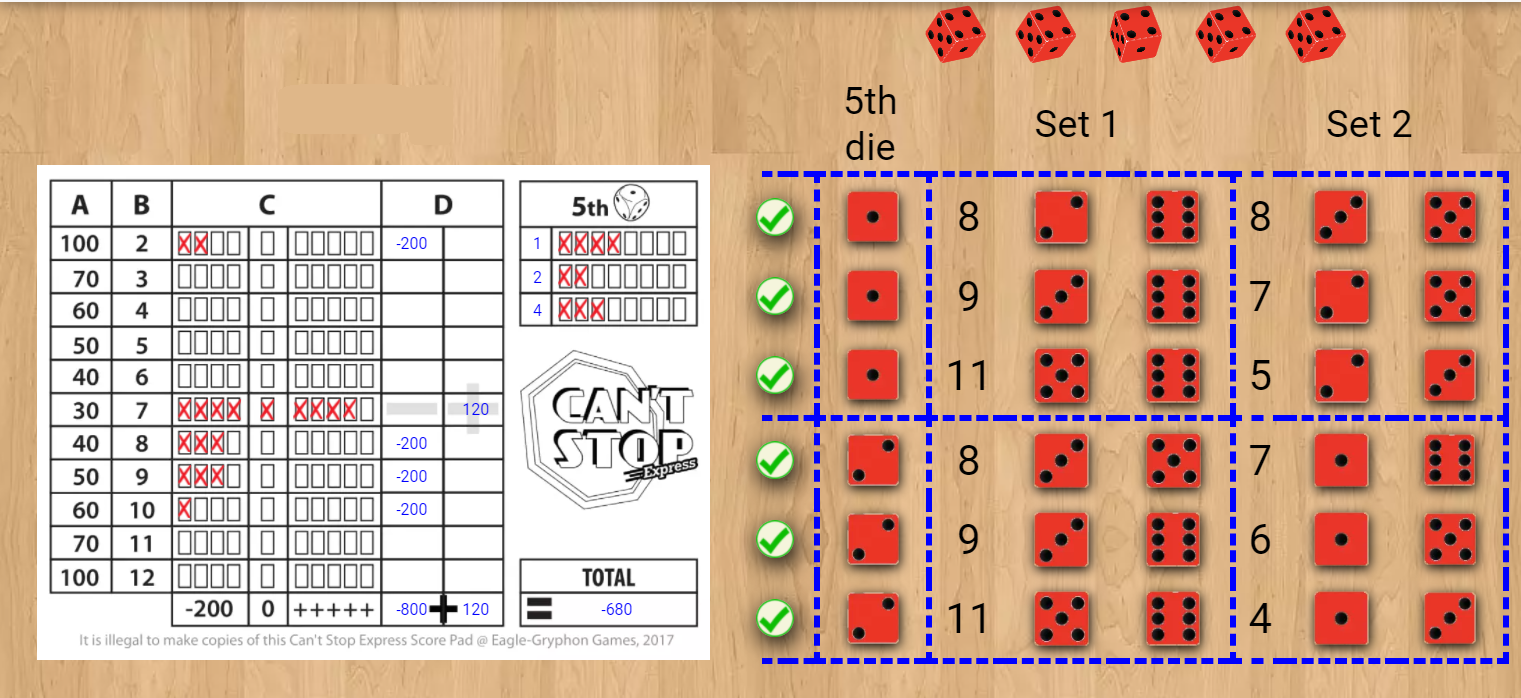
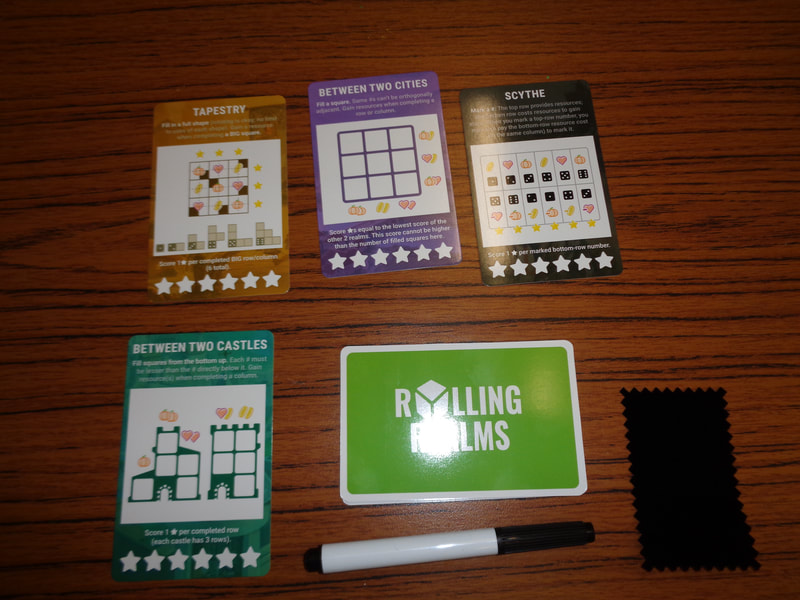
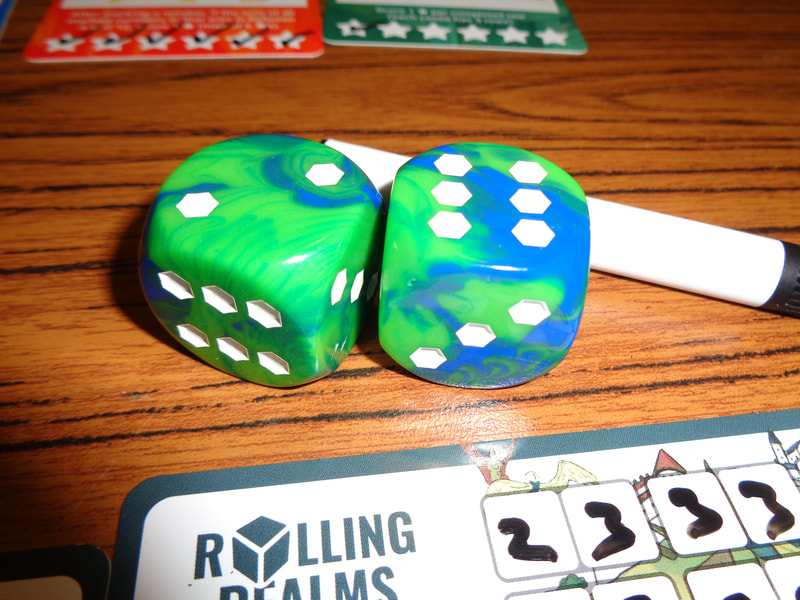
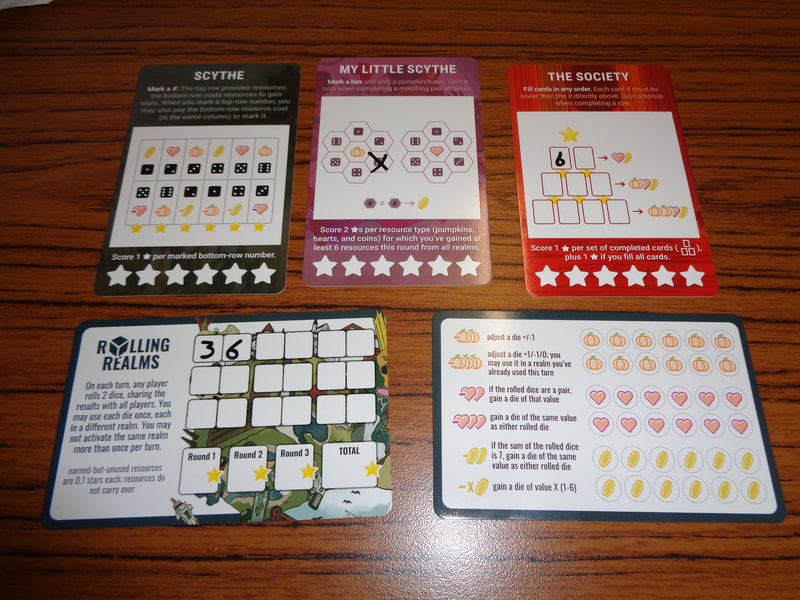
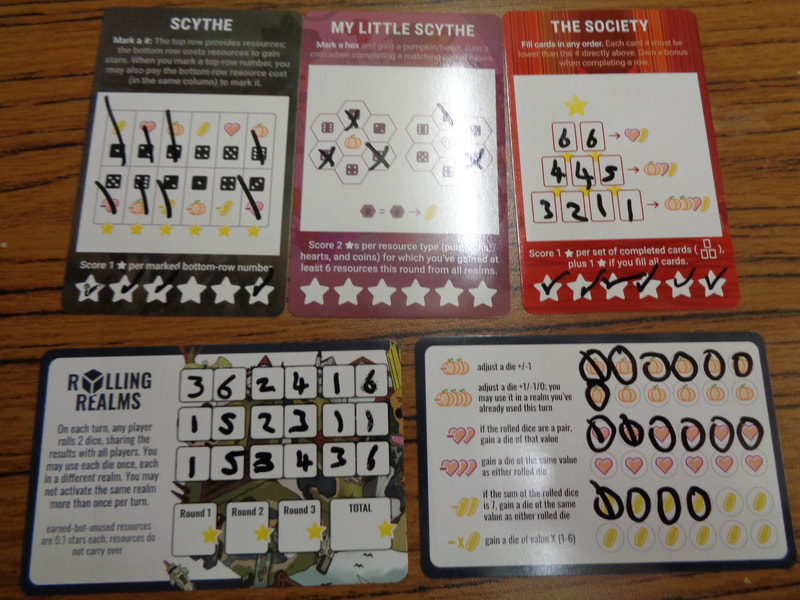
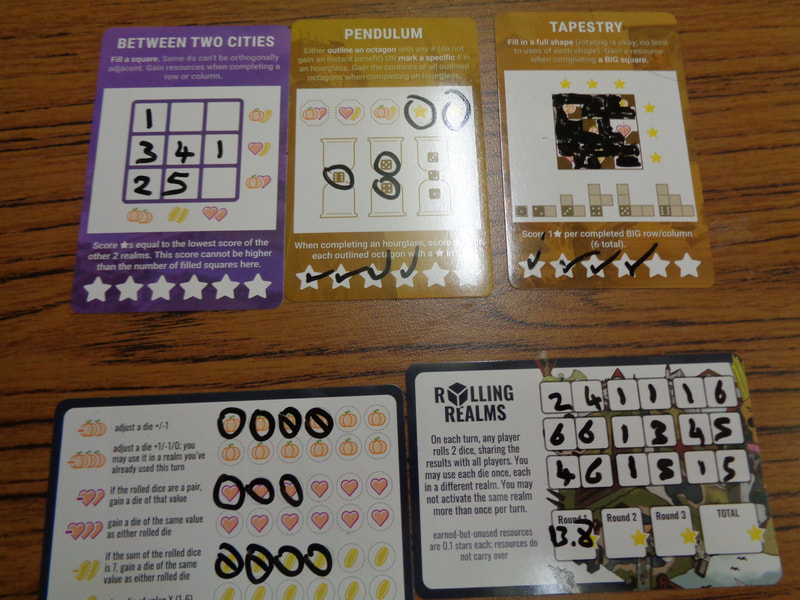
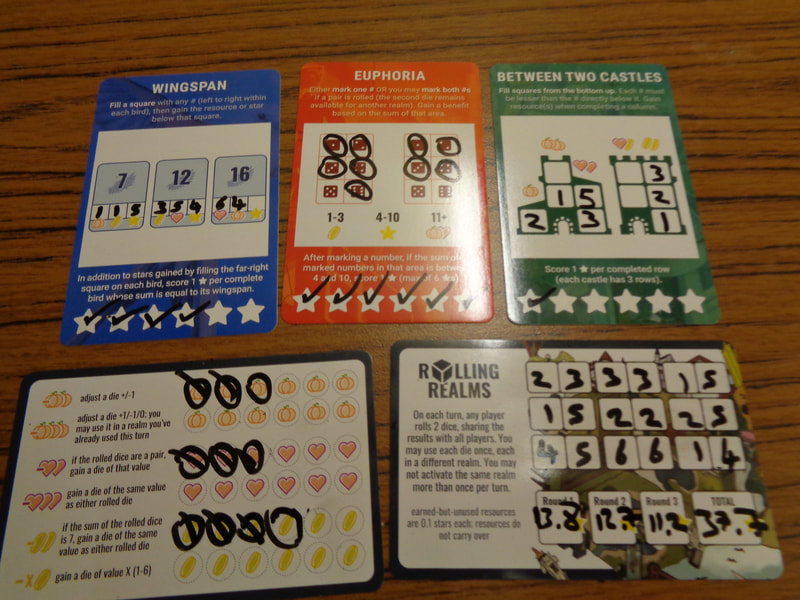
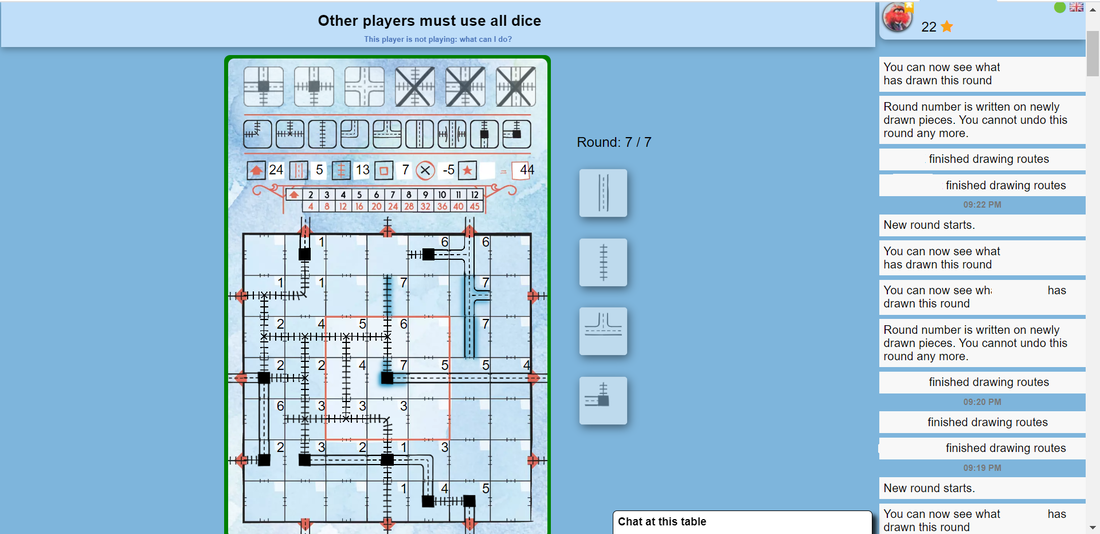
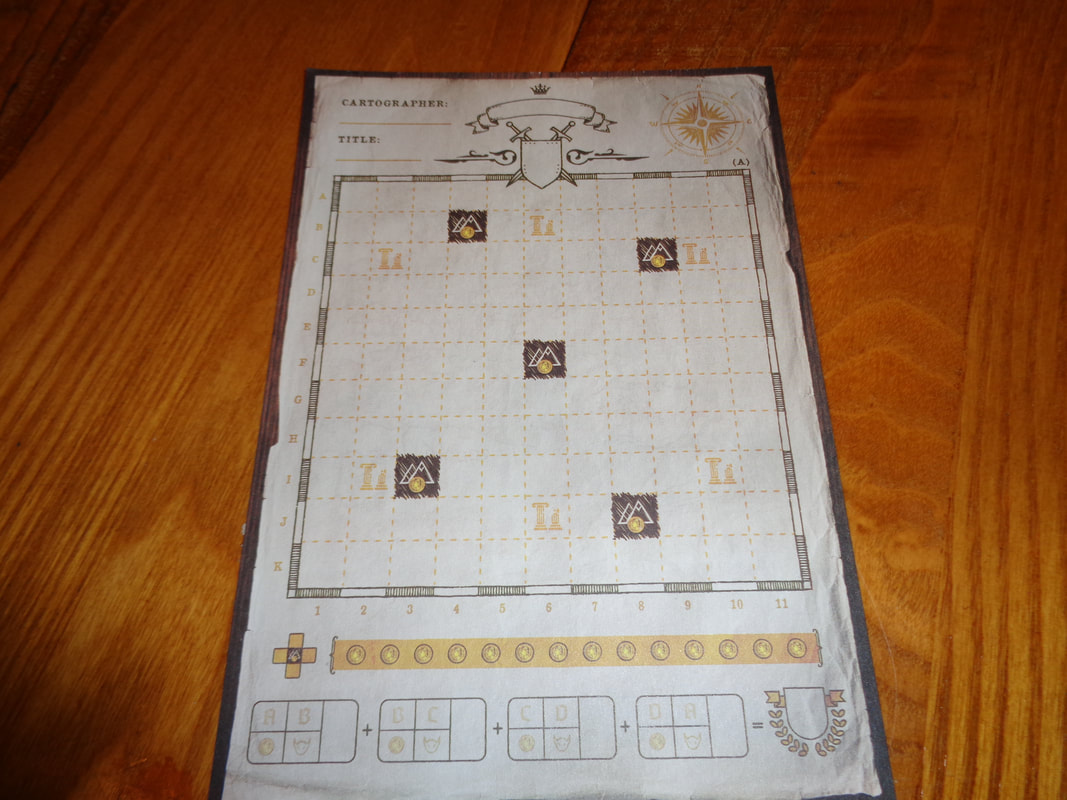
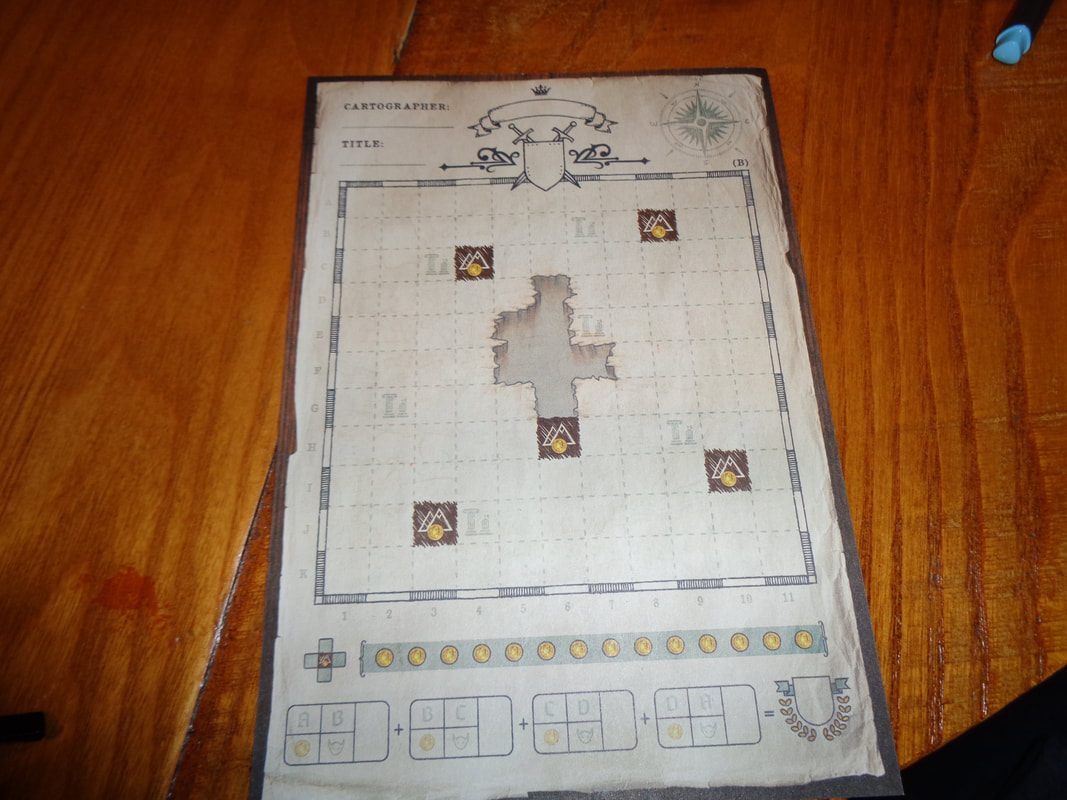
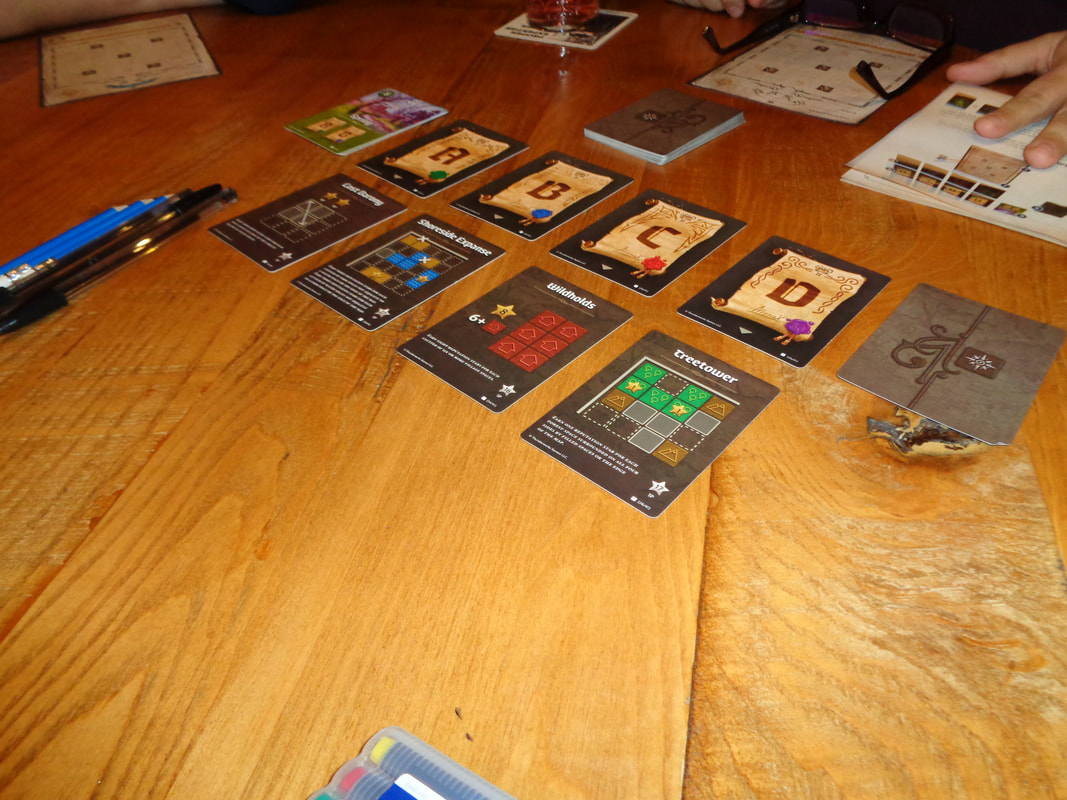
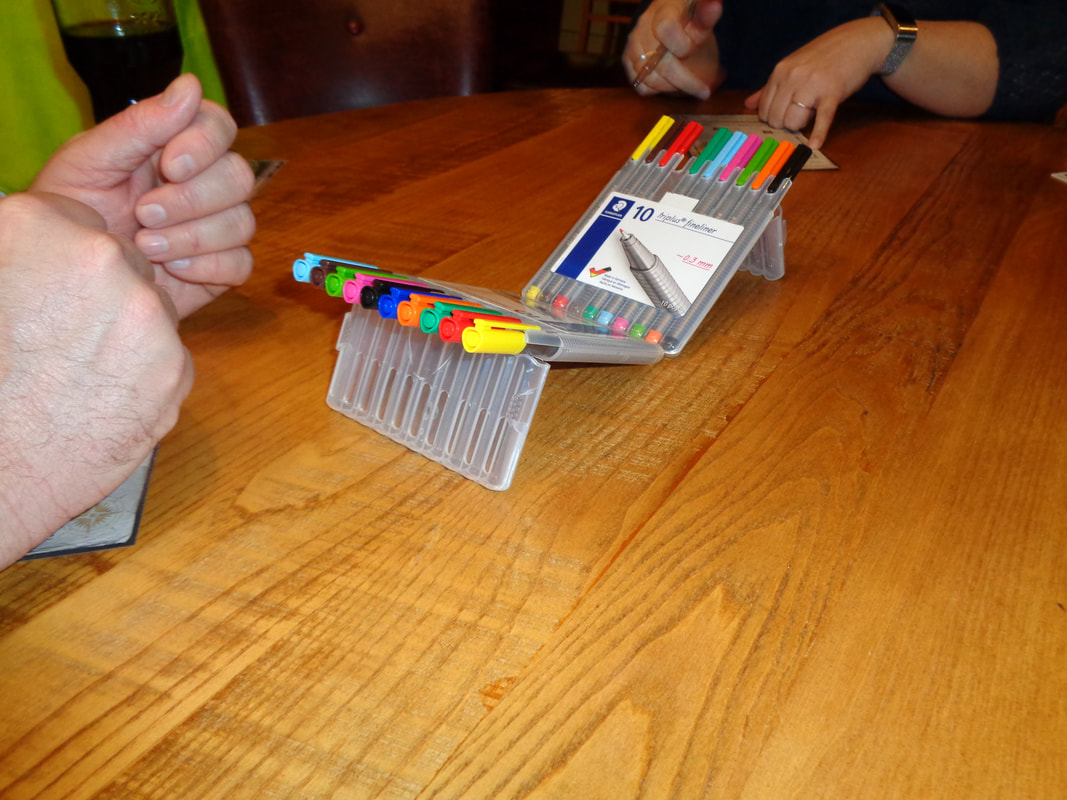
 RSS Feed
RSS Feed
